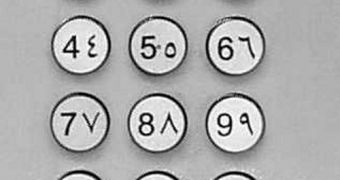Investigators working in Nicaragua say that their results indicate a tight connection between the ability to communicate via language and the a thorough understanding of the meaning associated with numbers. The new study was carried out on deaf people in the South American nation.
Susan Goldin-Meadow, a psychologist at the University of Chicago, led a series of field studies that determined deaf people to have an incomplete grasp of numbers higher than three. The study was conducted on individuals who did not receive any formal training in sign language.
Without exposure to this means of communication, the test subjects used what researchers called self-developed hand gestures. These manifestations arose independently of any type of formal education.
It was additionally revealed that the individuals who were using these “homesigns” were not usually taught about large numbers, or related number words. As such, their level of number comprehension was diminutive to say the least.
“The research doesn't determine which aspects of language are doing the work, but it does suggest that language is an important player in number acquisition,” explains scientist Betty Tuller.
“The finding may help narrow down the range of experiences that play a role in learning number concepts,” adds the investigator, who is a program director with the US National Science Foundation's (NSF) Division of Behavioral and Cognitive Sciences (DBCS).
“It's not just the vocabulary words that matter, but understanding the relationships that underlie the words – the fact that ‘eight' is one more than 'seven' and one less than 'nine',” Goldin-Meadow adds.
“Without having a set of number words to guide them, the deaf homesigners in the study failed to understand that numbers build on each other in value,” she goes on to say.
Details of the new investigation were published in a paper entitled “Number Without a Language Model,” which appears in the latest issue of the esteemed journal Proceedings of the National Academy of Sciences (PNAS).
“What's most striking is that the homesigners can see that seven fingers are more than six fingers and less than eight fingers, but they are unable to order six, seven and eight fingers,” Tuller says.
“In other words, they don't seem to understand the successor function that underlies number,” she adds.
One of the reasons why deaf people who learn sign language are better at understanding numbers is the fact that their training requires them to take part in counting routines early on in their childhood.
“The findings show that simply living in a numerate culture isn't enough to develop an understanding of large number. This conclusion comes from the observation that the homesigners are surrounded by hearing individuals who deal with large numbers all of the time,” Tuller concludes.

 14 DAY TRIAL //
14 DAY TRIAL //